(Português do Brasil) Você pode alterar as cores da estampa desejada que em seguida serão listadas as novas cores disponíveis.
(Português do Brasil) Ao selecionar as novas cores, a aplicação será mostrada na estampa em tempo real, permitindo assim diversas simulações.
(Português do Brasil) Após salvar as simulações, você poderá solicitar uma amostra das estampas que personalizou e também aplicá-las em modelos de croqui.



Get to know the main printing techniques utilized here at Nanete Textile
The pigment process can be applied to natural and artificial fibers, where the print is located on the surface of the knit, so there is no chemical reaction with the fiber to obtain colors. Pigments with insoluble particles are bonded to the fiber with the aid of resin, which react with heat forming an ultra-thin film on the mesh.
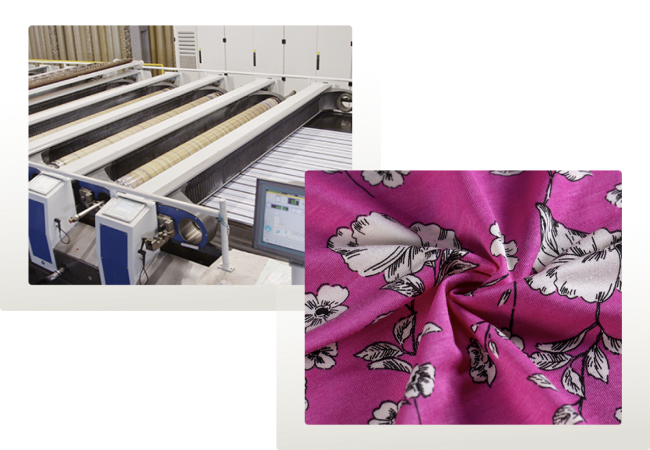
Reactive printing consists of a process focused on natural and artificial fibers, such as cotton and viscose, whose main characteristic is the vividness of colors and excellent solidity. After printing, the knit goes through a vaporization process so that the chemical reaction of the dye with the fiber occurs, then goes to the wash where it removes the compounds used in the printing paste, obtaining a soft touch.
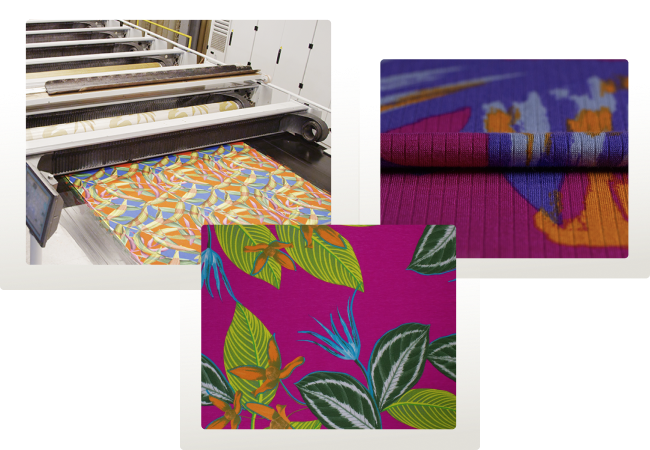
It is a process where the dye exposed to the temperature, that has a reaction with the synthetic fiber, allowing the enhancement of the vibrant colors of the print. After washing at the end of the process, it is possible to eliminate leftover dyes and auxiliaries. As a result, the knit will have an excellent degree of solidity, soft touch, good fit and extreme quality in the finish of the print. This printing technique is recommended for polyester fibers.
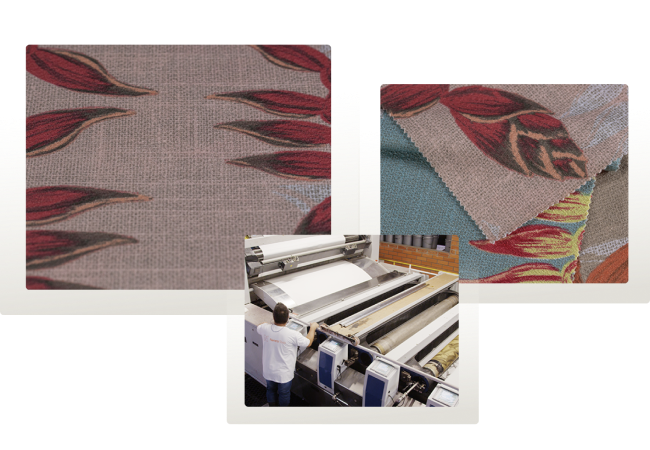
It is only possible to use this technique in articles with natural and artificial fibers, such as cotton or viscose, it’s necessary to have synthetic fiber in its composition. In it, a chemical reaction causes the cotton or viscose fibers to be carbonized and later removed in the washing process, forming a low relief design, leaving only the synthetic fiber that resists the chemical reaction.
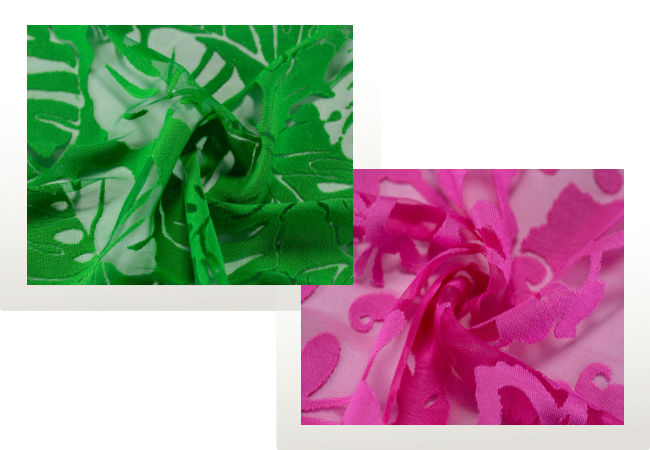
This process is used in cotton or viscose fabrics dyed with rongeable dyes. Afterwards, a dye reducer is applied that transforms the print into a lighter shade.
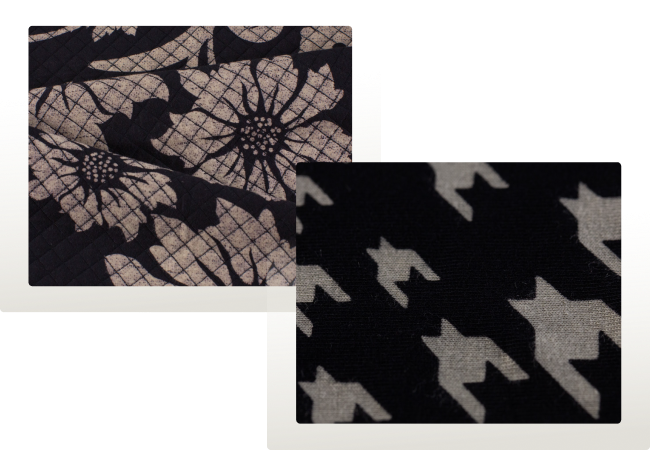
(Português do Brasil) A estamparia digital é um processo cada vez mais utilizado no mercado têxtil, principalmente devido a sua capacidade de produzir estampas com alta qualidade de detalhes e resolução excepcional. Diferente de outros métodos, ela utiliza uma técnica de impressão diretamente no tecido, resultando em cores vibrantes e duráveis. Essa é uma ótima opção para designers de estampas e estilistas, pois oferece maior flexibilidade criativa, devido a ampla variedade de cores, detalhes e texturas que podem ser estampados no tecido sem complexidade.
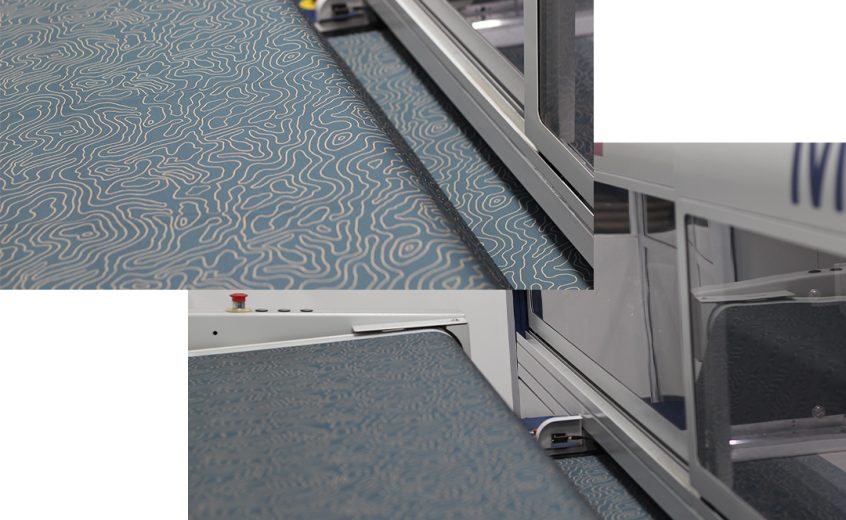
Fill out the form and get in touch with our team.


Copyright © 2025 - Nanete Textile | In Brazil, with more than 60 years in the market, we are a reference in the textile universe in the manufacturing and marketing of roll knit. Know more